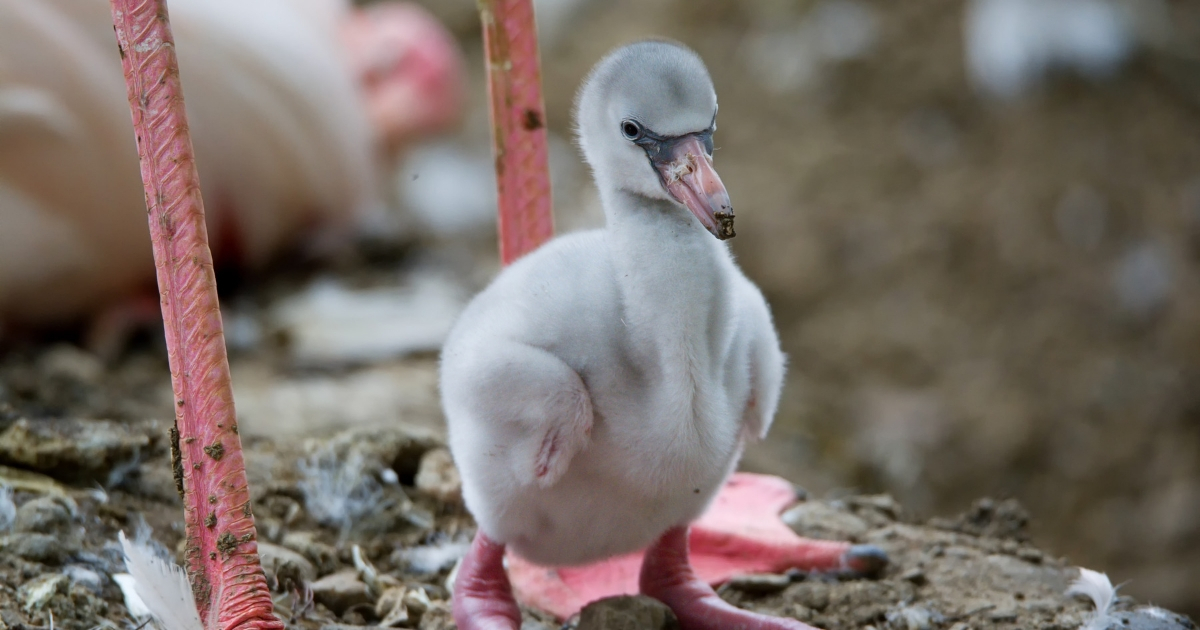
More Than 2,000 Abandoned Flamingo Chicks Saved by Rescuers
Flamingos are strange creatures. They look like a bunch of animal odds and ends put together and spray-painted salmon pink. And the smell, well, you can always tell when you’re nearing the flamingo exhibit at the zoo.
While flamingos aren’t exactly commonly seen outside of zoos, they’re a major part of our culture now. They’re often pictured as pool party equipment, and people advertise their brand of weirdness with lawn flamingos.
But this year has been rough for the leggy birds. One of the most popular breeding grounds in South Africa has a reservoir that is quickly drying up, leaving thousands of the baby birds at risk.
When the water level at Kamfers Dam, Northern Cape province, got too low, the parent flamingos simply flew the coop. The sea of pink up and left, leaving all their little gray-fuzzed babies to die.
The next step seemed obvious to many: Rescue the baby flamingos. But there were others who weren’t so sure that stepping in right then without extreme caution was the best course of action. The CEO of BirdLife South Africa wondered if the appropriate measures were taken in these rescue efforts.
“These endearing little birds were apparently left stranded and dying by their parents as the waters of the dam dried up,” CEO Mark Anderson told The Guardian.
“(But) was the decision to step in and remove the abandoned chicks and eggs the right one? Who made this decision, under what authority and in terms of what expertise?”
Several groups have gotten in on these efforts to extract and raise the flamingos, including the Southern African Foundation for the Conservation of Coastal Birds.
“The birds started to breed, and had eggs and chicks, and the water level started to decrease and they started to abandon these chicks and eggs,” research manager Katta Ludnyia told NPR.
“We rehabilitate, that’s our business, and with the aim of releasing back into the wild,” rehabilitation manager Nicky Stander told The Guardian. “We have very large facilities here that were built last year. And we thought we were the best people to contribute to this project.”
“As time goes on and they grow, we are going have to adapt the way that we house them and make sure that they have long running space so they can exercise their legs,” she added.
It’s been a sad time for the rescuers of over 500 flamingo chicks rescued from a dried up dam in Kimberley. 186 of them died within 24 hours of arriving in Cape Town last week. @pheladi_s #NewsHour Courtesy #DStv403 pic.twitter.com/vQvcDaTE03
— eNCA (@eNCA) January 31, 2019
Over 500 of the chicks were flown to Cape Town to a Southern African Foundation for the Conservation of Coastal Birds facility. Because they were so new and fragile, only 70 percent of them made it through the first day.
Dozens of volunteers are helping prep food, feed, and care for the baby flamingos, who need to eat every three hours. Rescuers hope to be able to release the flamingos in a few months’ time, but that means a lot of volunteers and donations for the foreseeable future.
Truth and Accuracy
We are committed to truth and accuracy in all of our journalism. Read our editorial standards.
Advertise with The Western Journal and reach millions of highly engaged readers, while supporting our work. Advertise Today.












